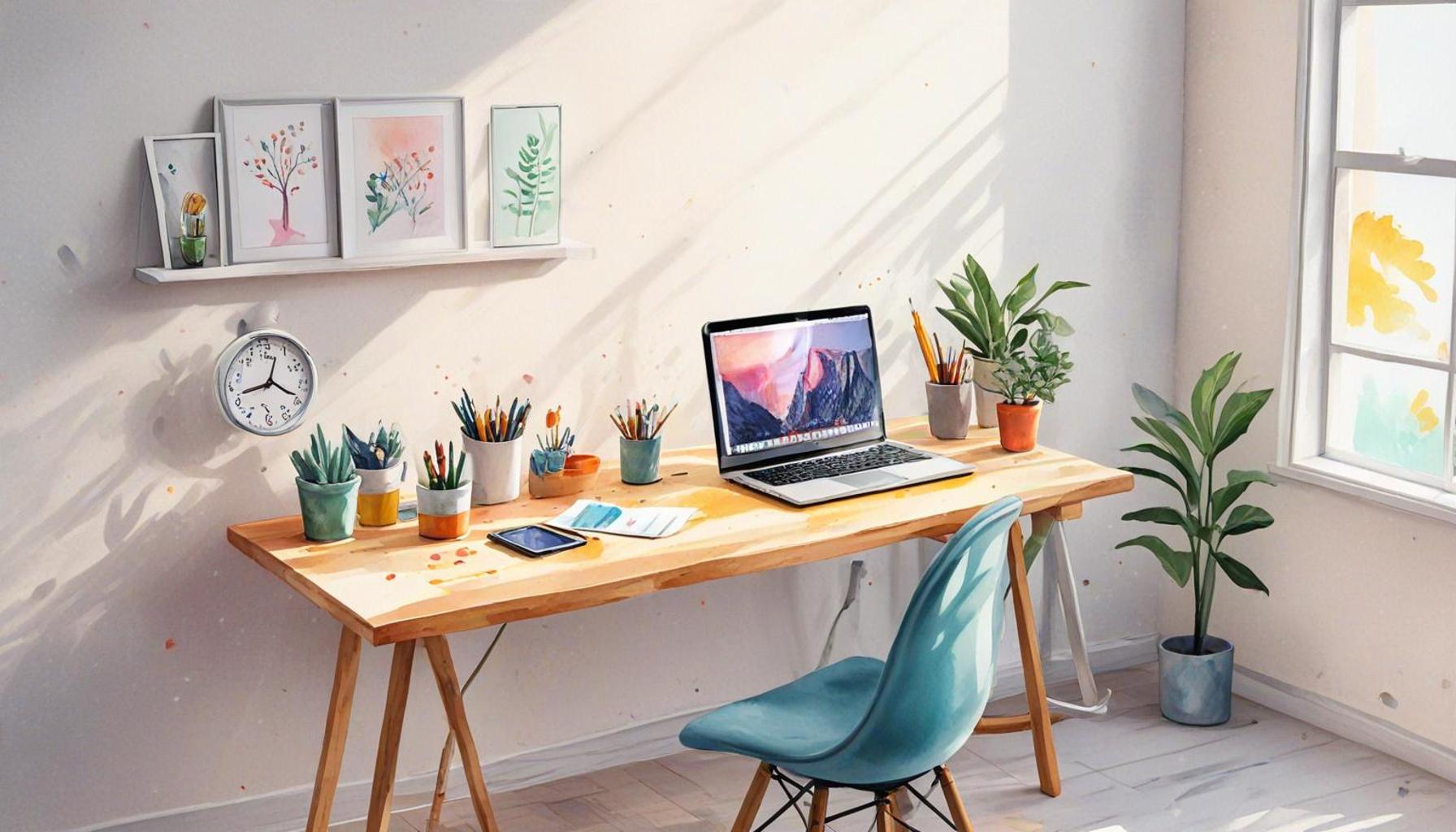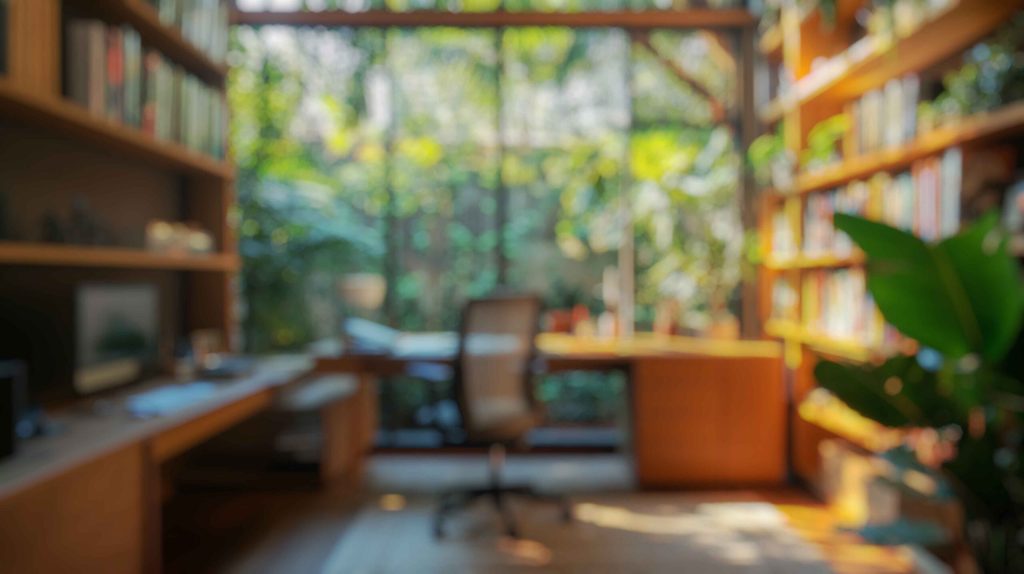Minimalist Workspaces: Optimizing the Environment for Better Time Management

Understanding Minimalism in Workspaces
In a world filled with distractions, minimalist workspaces have emerged as a beacon of clarity and focus. By stripping away unnecessary clutter, individuals can foster an environment that promotes better time management and productivity. But what exactly defines a minimalist workspace?
Key Elements of a Minimalist Workspace
- Clean Surfaces: A clear desk allows for clearer thinking. Studies reveal that individuals with clutter-free desks are often more productive. For example, a report published by the University of California, Los Angeles (UCLA) highlights that a disorganized workspace can lead to increased stress levels, inhibiting productivity.
- Functional Decor: Items that serve a purpose are prioritized. In a minimalist workspace, each item should contribute to productivity. For instance, utilizing a limited number of decorative elements that also function as organizational tools can reinforce a focus on efficiency.
- Neutral Palette: Calming colors can reduce stress and enhance focus. Utilizing shades of gray, white, or soft earth tones can create a serene backdrop, conducive to sustained concentration. Research indicates that color psychology plays a vital role in productivity, with certain colors helping to enhance cognitive function.
Research shows that a minimalist approach can lead to increased efficiency. For instance, studies indicate that employees with organized workspaces report higher levels of satisfaction and lower stress levels. In fact, a survey by Steelcase found that 90% of participants felt more productive in organized environments.
Broader Aspects of Minimalism
Implementing minimalism doesn’t just involve aesthetics; it also encompasses:
- Elimination of distractions: This includes turning off unnecessary notifications on digital devices, keeping the workspace free from personal items, and even using tools like noise-canceling headphones to minimize auditory distractions.
- Streamlined processes: By adopting tools that help in task automation (such as project management software like Asana or Trello), individuals can maintain focus and reduce the time spent on repetitive tasks.
- Prioritized tasks: Utilizing techniques such as the Eisenhower Matrix can help individuals identify which tasks to tackle first, ensuring that urgent and important tasks are completed efficiently.
Incorporating these principles into your workspace can lead to remarkable transformations. By committing to a minimalist approach, individuals may discover that their time management skills improve significantly. The journey to creating a minimalist workspace may spark curiosity about the specific strategies that cater to individual needs. For instance, experimenting with different arrangements or approaches can help in refining a personalized system that enhances productivity.
As organizations increasingly prioritize employee well-being, the minimalist workspace concept continues to garner attention, making it a topic worthy of further exploration.

DISCOVER MORE: Click here for insights on minimalism
Transforming Your Workspace for Maximum Efficiency
Creating a minimalist workspace involves more than just removing excess items from your desk; it’s a holistic approach designed to enhance focus and effectiveness. The principles of minimalism extend into every facet of one’s work environment, reinforcing the idea that less truly can be more when it comes to productivity. But what are the concrete steps involved in establishing such an environment?
Assessing Necessary vs. Unnecessary Items
One of the first steps in creating a minimalist workspace is performing a thorough assessment of the items within your environment. This involves critically evaluating what you deem essential for your daily tasks and what can be eliminated. Consider the following:
- Daily Tools: Retain only those items that you engage with regularly, such as your laptop, a planner, or necessary writing utensils.
- Supplies: Limit paper supplies and stationery. According to a survey conducted by the American Psychological Association, having fewer items nearby can significantly reduce distractions, allowing for more streamlined workflow.
- Personal Items: While personal mementos can offer comfort, be selective. A couple of meaningful photographs or a small plant can enhance motivation without overwhelming the senses.
Implementing these guidelines can help you make tough decisions about what stays and what goes, nurturing a workspace that enhances your capacity to manage time effectively.
The Role of Technology
In today’s digital age, technology should play a key role in optimizing a minimalist workspace. By integrating the right digital tools, you can minimize physical clutter while enhancing efficiency. Consider the following approaches:
- Adopting Cloud Solutions: Utilize cloud storage services like Google Drive or Dropbox to reduce the need for physical files. This not only declutters your desk but also facilitates easier access to important documents.
- Task Management Apps: Applications such as Todoist or Notion can help keep your tasks organized without the need for sticky notes or paper lists scattered around your desk. Analytics from these platforms often reveal increased productivity among users.
- Wind Down Notifications: Limiting the number of notifications received on your electronic devices can further eliminate distractions. Consider customizing your settings to only receive alerts that are truly important.
By leveraging technology in this manner, you can effectively maintain a minimalist workspace that continually supports your time management objectives.
In summary, establishing a minimalist workspace requires an intentional focus on assessing necessary items and adopting effective technological solutions. As you embark on this transformative journey, remember that the goal is to cultivate an environment that not only looks clean but feels empowering. Embracing these principles can unlock new levels of productivity and time management, laying the groundwork for both personal and professional success.
| Category | Description |
|---|---|
| Clutter-Free Environment | Minimizing distractions improves focus and reduces stress. |
| Enhanced Productivity | A streamlined space maximizes efficiency and fosters quick decision-making. |
An essential aspect of minimalist workspaces is the creation of a clutter-free environment. By limiting physical distractions, individuals can enhance their focus, resulting in increased productivity and a significant reduction in stress levels. This direct relationship between workspace organization and mental clarity has been highlighted in numerous studies, illustrating that a minimalist approach can lead to substantial performance improvements. With fewer items competing for our attention, employees can dedicate more cognitive resources to their crucial tasks.Furthermore, the emphasis on enhanced productivity in minimalist settings encourages rapid and effective decision-making. The simplicity of these environments empowers individuals to prioritize their tasks better and allocate time more efficiently. By fostering an atmosphere that values clean aesthetics and organized spaces, workplaces can inspire creativity and innovation, driving both individual and team performance. Discover more about how such settings contribute to comprehensive time management strategies and appeal to varied professional needs.
DISCOVER MORE: Click here to enhance your productivity
Designing Your Workspace with Intention
While decluttering and utilizing technology are essential, the design of your workspace plays a crucial role in fostering an atmosphere conducive to time management. Emphasizing practicality, comfort, and inspiration in your workspace design can significantly impact your ability to focus and remain productive. By carefully considering elements such as layout, lighting, and decor, you can promote an environment that resonates with minimalist principles.
Optimizing Layout and Flow
The layout of your workspace should encourage fluid movement and easy access to essential items. A well-structured arrangement can mitigate the stress that often leads to time wastage. Here are key strategies for optimizing your workspace layout:
- Zone Your Workspace: Divide your workspace into functional zones where specific tasks can take place. For example, dedicate one area solely to computer work, another to writing or brainstorming, and a quieter zone for thinking or strategizing. This zoning creates a mental distinction between tasks, helping to establish the right mindset for each activity.
- Keep Essentials Nearby: Arrange frequently used items within arm’s reach. This minimizes time spent searching for tools and resources, reducing frustration and interruptions.
- Use an Ergonomic Approach: Invest in ergonomic furniture that promotes comfort, such as an adjustable chair or a sit-stand desk. According to the Occupational Safety and Health Administration (OSHA), ergonomic workspaces can increase productivity by reducing fatigue and discomfort.
Emphasizing Natural Light and Color
The impact of lighting and color on productivity is well-documented. In minimalist workspaces, leveraging these elements can enhance your overall experience and increase your time management efficacy:
- Maximize Natural Light: Position your desk near windows to take advantage of natural light, which has been shown to improve mood and focus. A study by the University of Illinois at Urbana-Champaign found that workers with access to natural lighting reported higher satisfaction levels and productivity rates.
- Choose Soothing Colors: The color scheme of your workspace influences your mental state. Calming colors such as light blue and soft green can help reduce stress and enhance concentration. Conversely, vibrant colors like orange can stimulate creativity but should be used sparingly to avoid overwhelming the senses.
The Power of Mindful Decor
In a minimalist workspace, decor should serve a purpose rather than merely filling space. Mindfully chosen items can inspire creativity, reinforce focus, and reflect personal values:
- Art and Inspiration: Incorporate motivational quotes or artwork that resonates with your aspirations. Research shows that visual stimulation can boost creativity and morale, fueling your productivity.
- Functional Decor: Select decor items that double as practical tools, such as a stylish clock or a decorative storage solution. This approach reinforces the minimalist ethos of functionality while still adding character to your workspace.
Through the intentional design of your workspace, including layout, lighting, and decor, you can create an environment that not only embraces minimalism but also actively promotes effective time management. By fostering a space that is organized, visually appealing, and tailored to your specific needs, you lay the groundwork for sustained productivity and engagement in your work. Remember, a thoughtfully arranged workspace can be one of the most powerful tools in your productivity arsenal.
DISCOVER MORE: Click here to uncover practical tips
Conclusion: The Impact of Minimalist Workspaces on Time Management
In today’s fast-paced world, optimizing your workspace with minimalist principles can revolutionize your approach to time management. By removing distractions and creating a thoughtfully designed environment that prioritizes functionality, comfort, and inspiration, you pave the way for enhanced productivity. Embracing a minimalist workspace allows for clearer focus, enabling you to tackle tasks with greater efficiency and engagement.
A well-structured and aesthetically pleasing workspace not only supports improved time management but also contributes to your overall well-being. The integration of natural light, calming colors, and mindful decor plays a pivotal role in enhancing mood and reducing stress, which is critical for maintaining sustained focus throughout your workday. As studies have shown, work environments that promote physical comfort and mental clarity can significantly boost productivity levels.
Ultimately, the journey toward a more organized and efficient workspace begins with small, intentional changes. Start by decluttering your environment and curating it to match your specific needs—both practical and inspirational. As you refine your workspace, you will likely find that improved time management is just one of the many benefits that follow. With a committed approach to minimalism, you can transform your workspace into a powerful ally in achieving your professional goals. Dive deeper into minimalist practices and discover how they can empower you to reclaim your time and enhance your productivity.
Related posts:
Deconstructing the Agenda: Minimalist Techniques to Organize Your Day
The Art of Saying No: How Minimalism Can Improve Your Time Management
Overcome Procrastination Minimalistic Techniques for Boosting Personal Productivity
Creating Efficient Routines: The Intersection of Minimalism and Time Management
Developing a Minimalist Mindset: How to Change Your Perspective on Time and Productivity
Minimalist Monthly Planning: Strategies to Simplify Goals and Tasks Throughout the Month

Linda Carter is a writer and organization expert specializing in minimalism and personal organization. With extensive experience helping individuals create clutter-free, functional spaces and adopt mindful habits, Linda shares her knowledge on our platform. Her goal is to empower readers with practical advice and strategies to simplify their lives, stay organized, and achieve a sense of calm and balance in their daily routines.